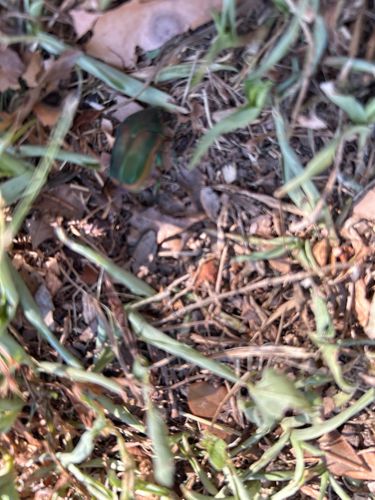Figeater Beetle
Scientific Name: Cotinis mutabilis
Order & Family: Coleoptera, Scarabaeidae
Size: 2.5 to 3.5 cm (1 to 1.4 inches) in length

Natural Habitat
Warm, sunny areas, often found in gardens, orchards, and urban landscapes where ripe fruits and decaying organic matter are present. Larvae live in compost piles, rotting logs, and rich soil.
Diet & Feeding
Adults primarily feed on ripe and rotting fruits (especially figs, peaches, grapes, and tomatoes), tree sap, and sometimes pollen. Larvae (grubs) feed on decaying organic matter, compost, and sometimes plant roots.
Behavior Patterns
Adults are active during the day, especially in warm weather. They are strong, clumsy fliers and create a buzzing sound. They are attracted to fermenting fruits. Larvae are C-shaped grubs that burrow through the soil and organic matter. They pupate in chambers made of soil. They often emerge after summer rains.
Risks & Benefits
Potential Risks: Can be a minor pest in gardens and orchards by damaging ripe fruits. Their larvae can sometimes damage turfgrass roots, though less so than other grub species. Potential Benefits: Adults aid in the decomposition of decaying organic matter by feeding on fallen fruits. Larvae are beneficial decomposers, helping to break down compost and enrich soil.
Identified on: 10/3/2025